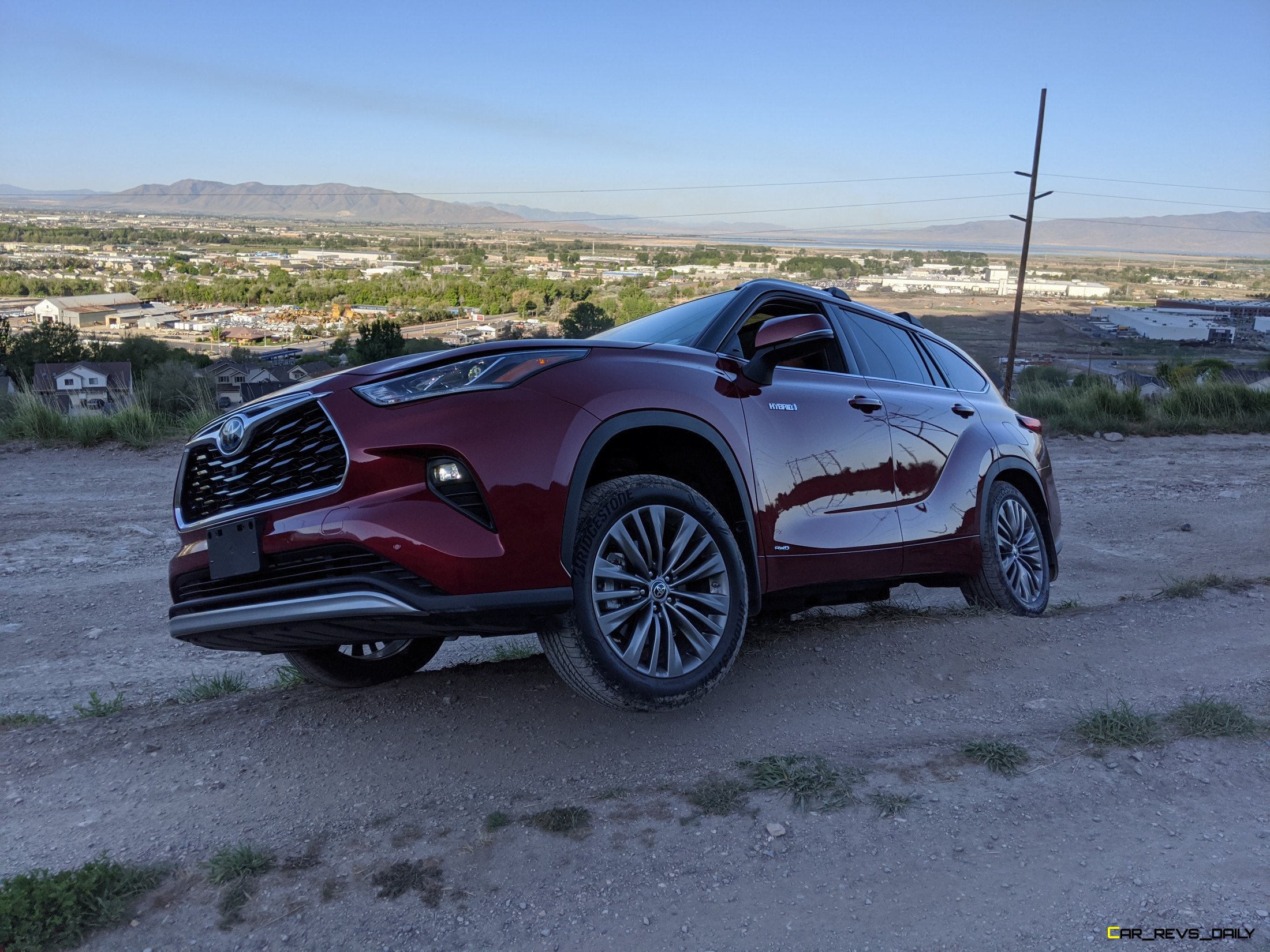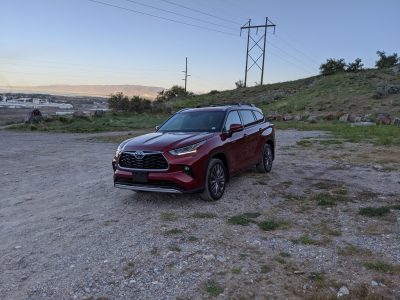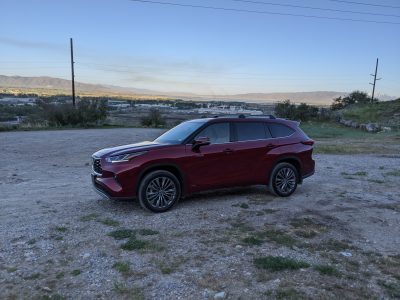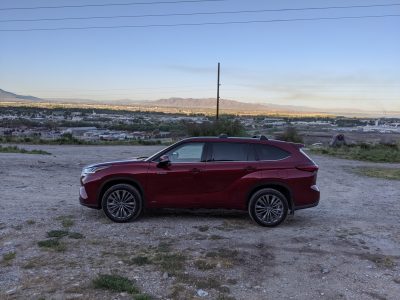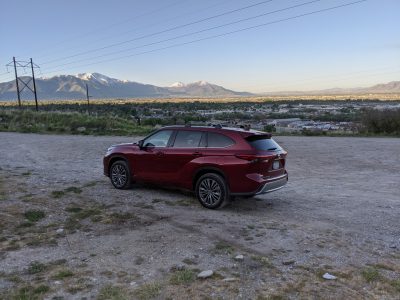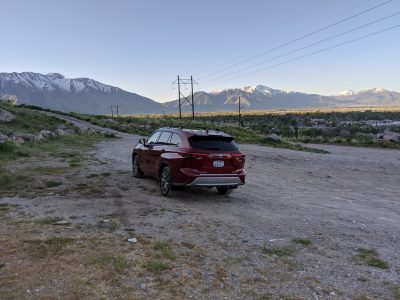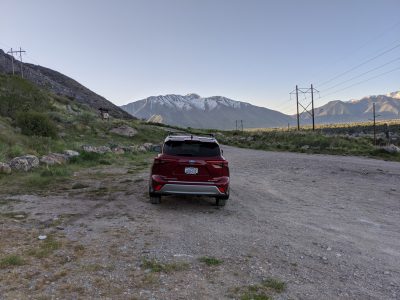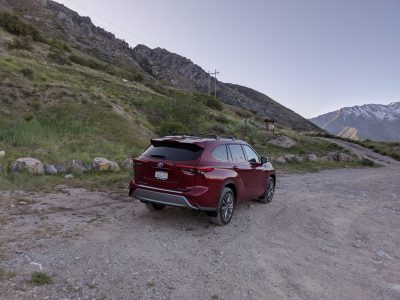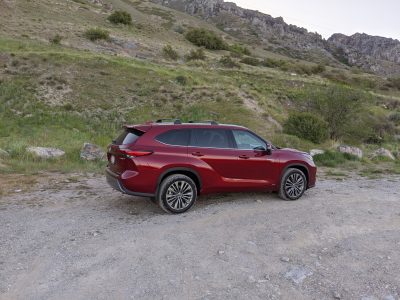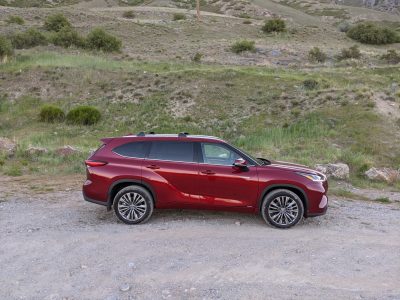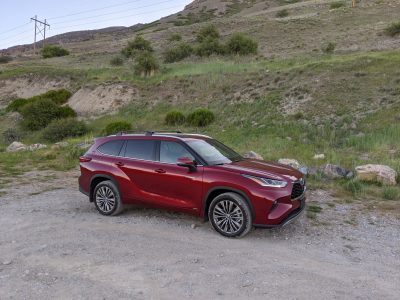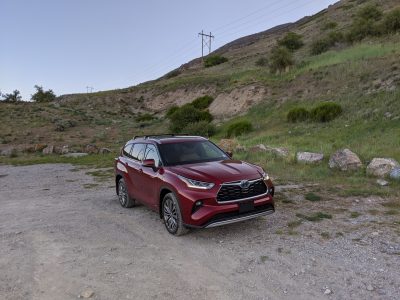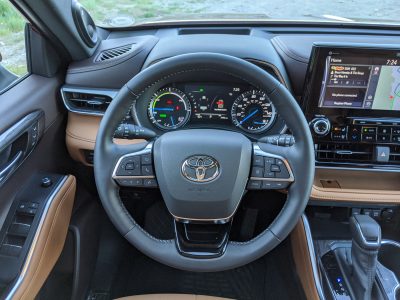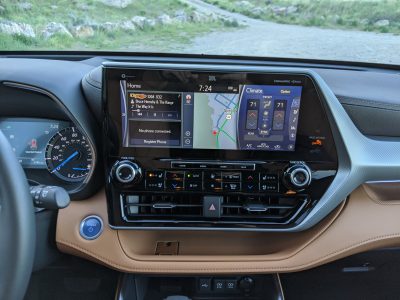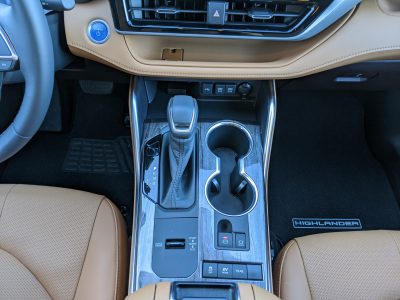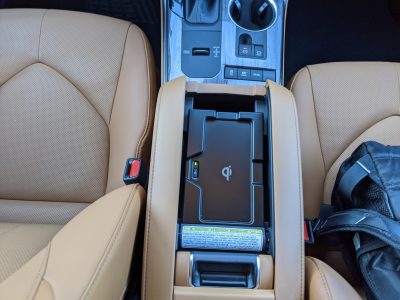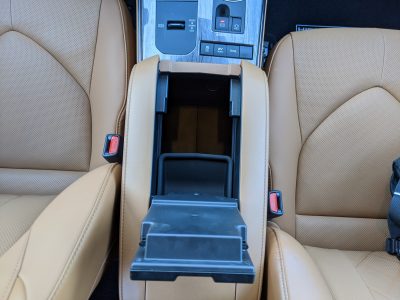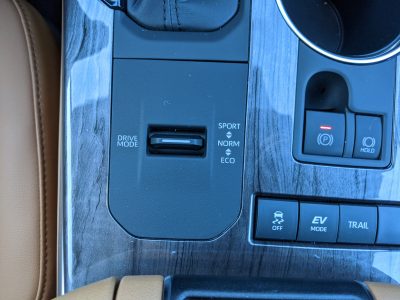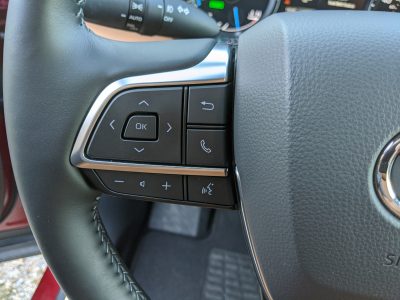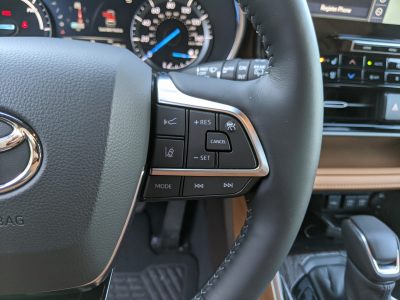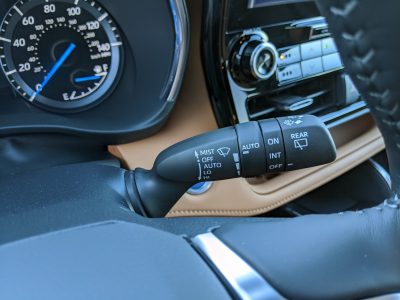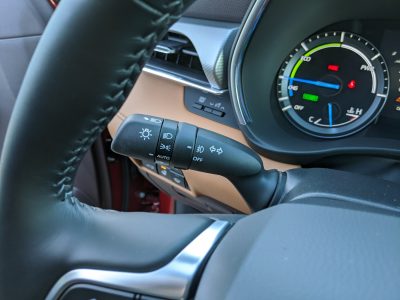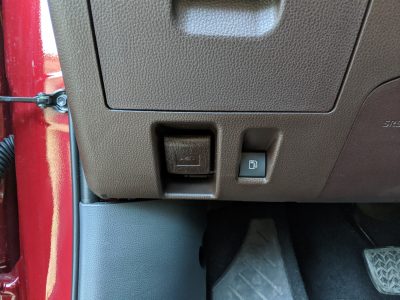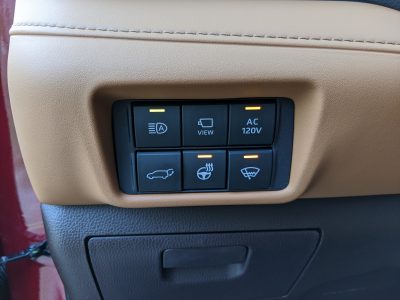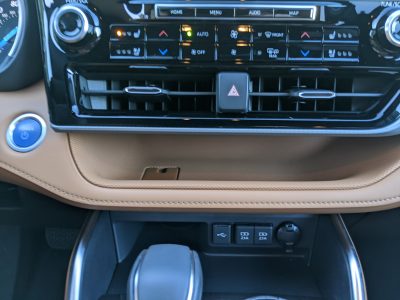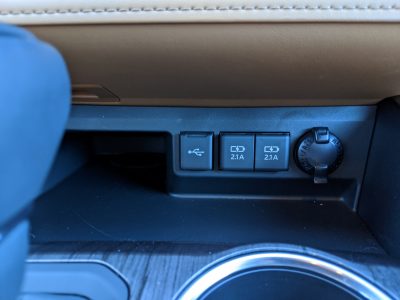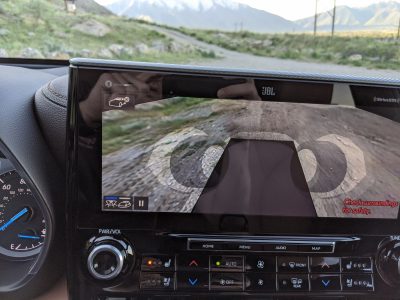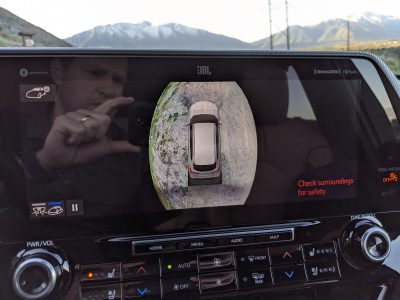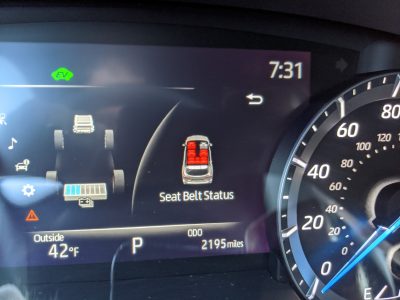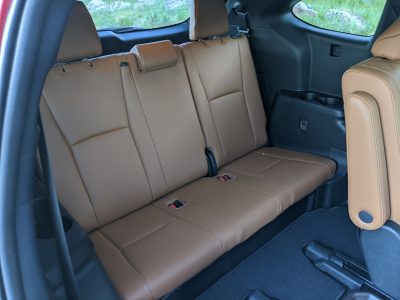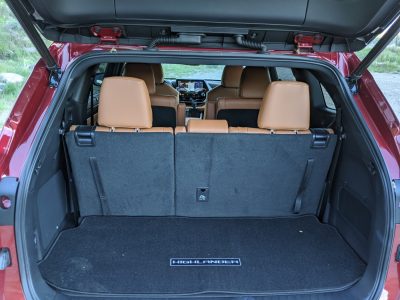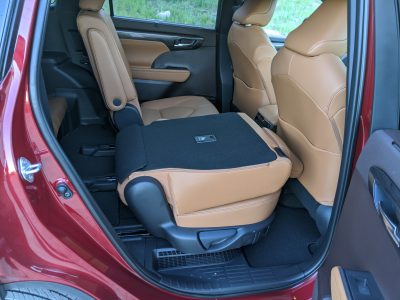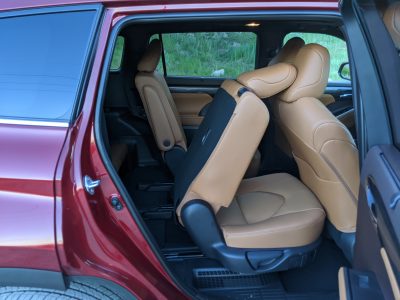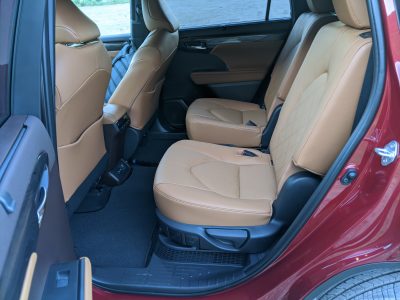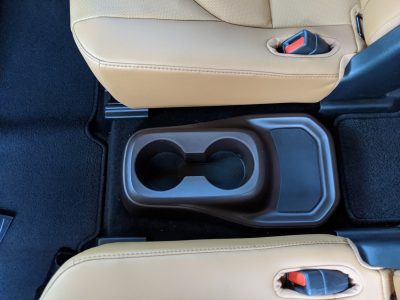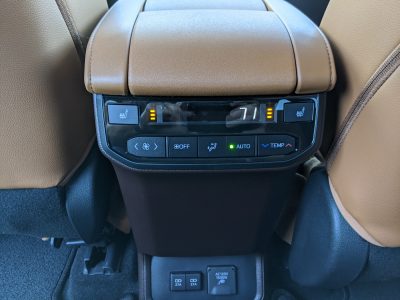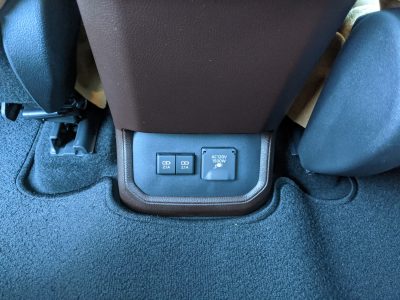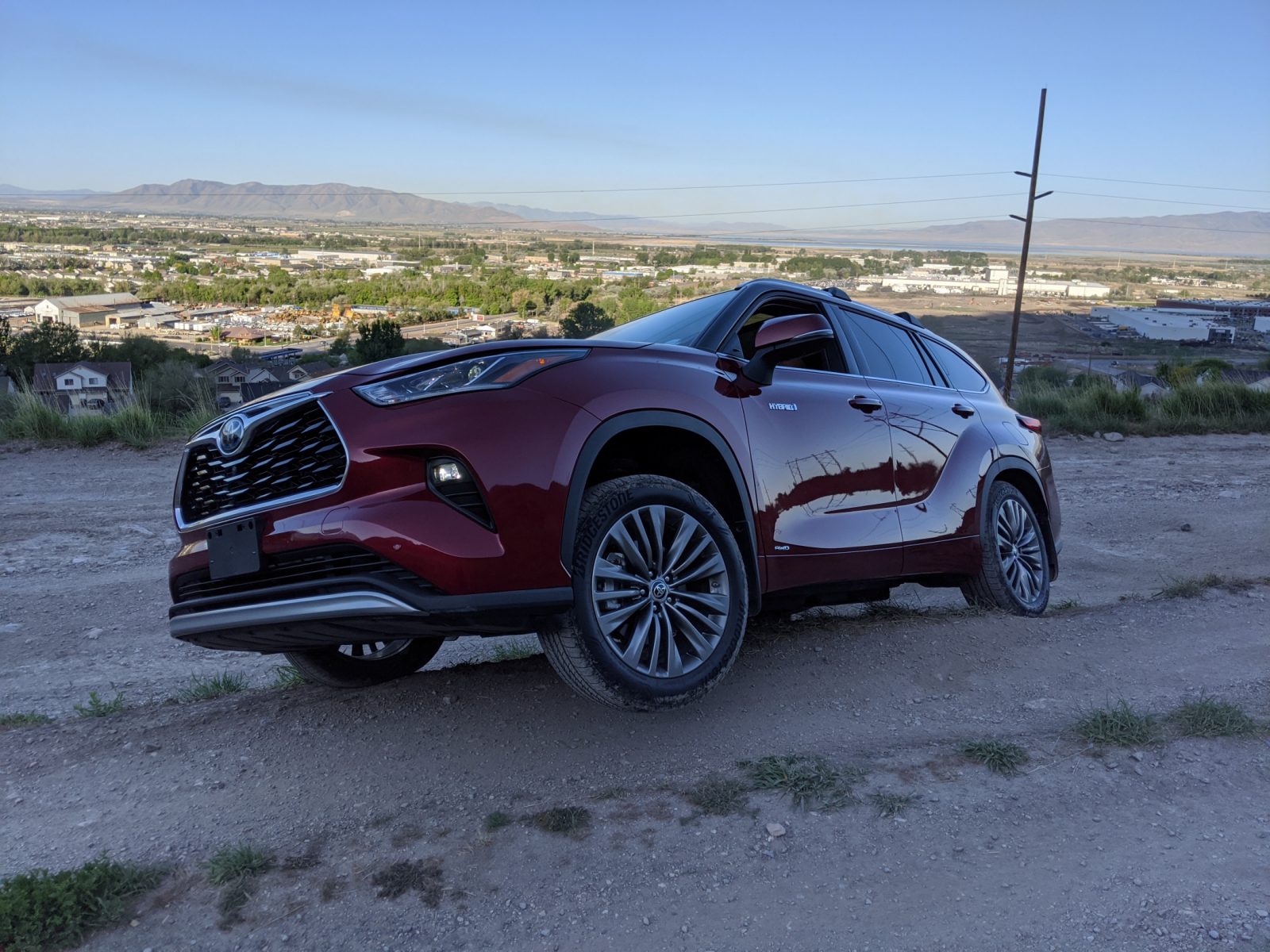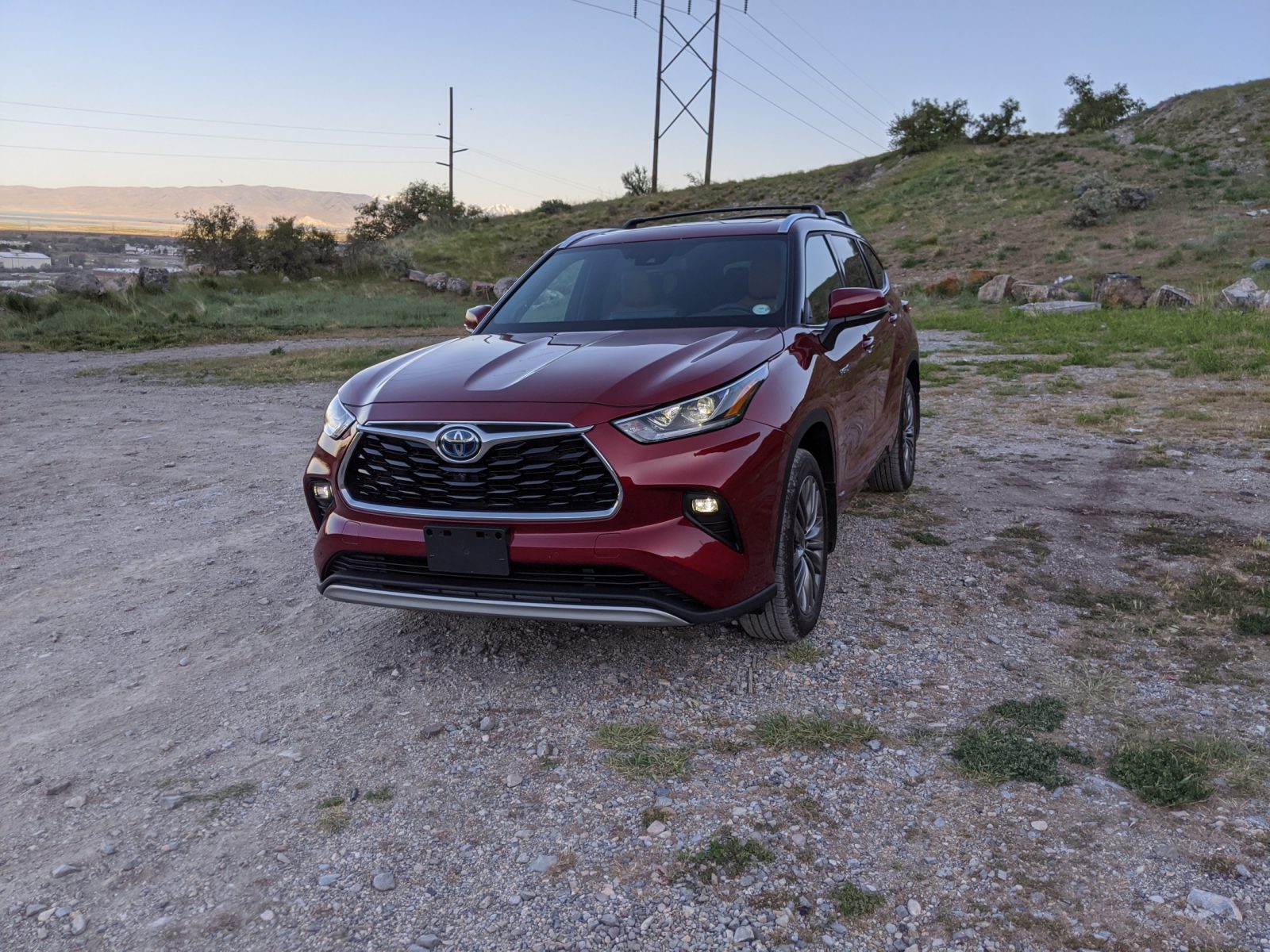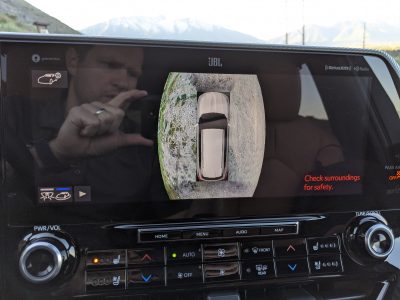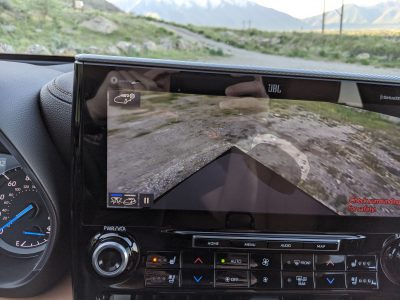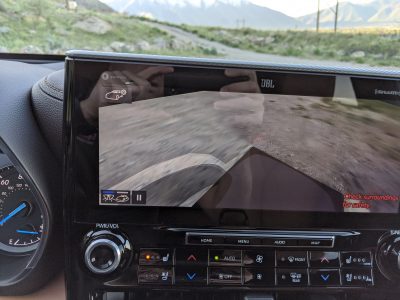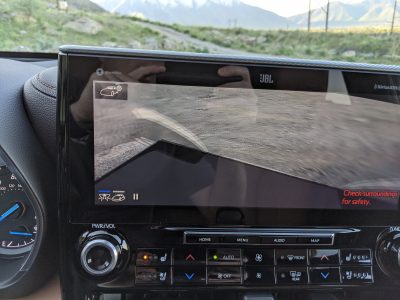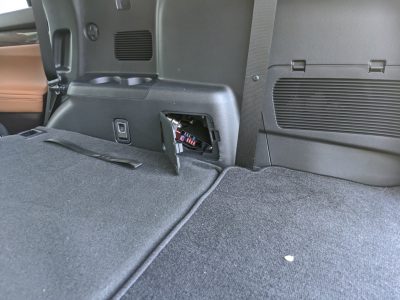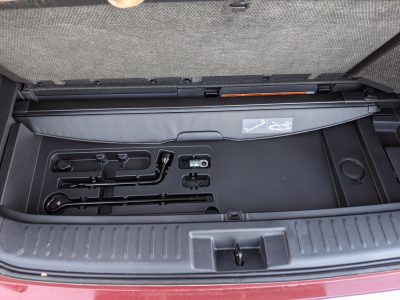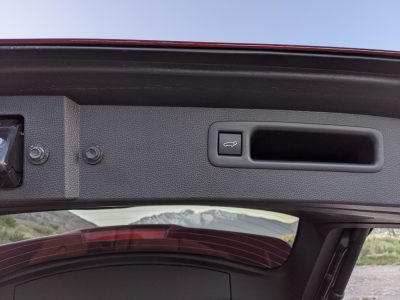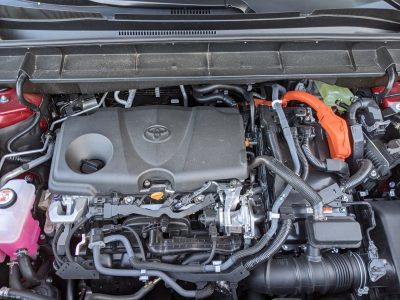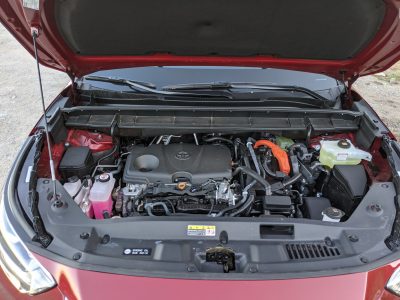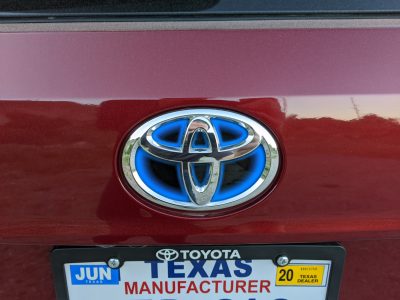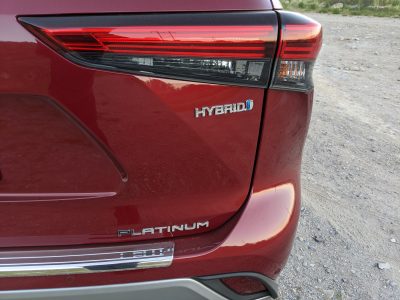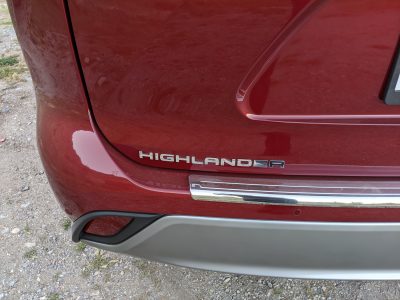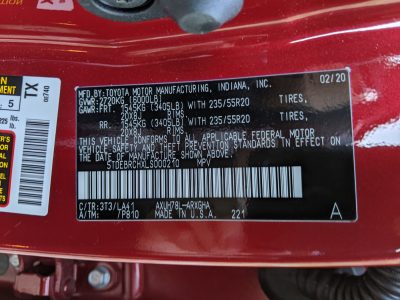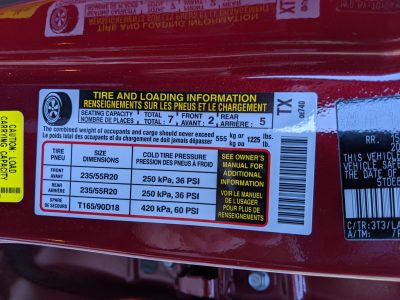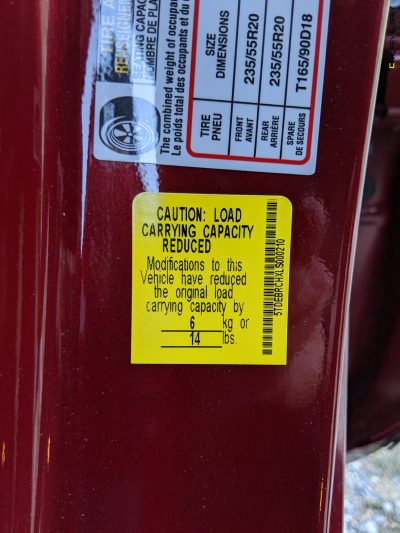Toyota was first to market a mass-produced hybrid vehicle with the Prius, and they continue to innovate and improve. The new Highlander is evidence of that with incredible efficiency for a three-row SUV. It switches from full electric to hybrid to full gas motor so smoothly that you’ll miss it unless you’re paying very close attention. The e-CVT uses an ingenious planetary gear system, so no belts like other CVT’s. Toyota has made significant updates for the 2020 Highlander and it is by far the best Highlander yet!
Exterior
Toyota redesigned the Highlander for 2020 and it looks significantly better than past models. It has increased in size and lost some weight in the process. Toyota keeps delivering with great design that is more bold than subdued, and our Platinum trimmed tester is no exception.
It appears that Toyota has crossed the Highlander styling cues with the smaller Rav4 and Landcruiser top dog. The grill, bumper, and lighting designs are more on par with the Rav4, but the hood, with two large bulges, is clearly Land Cruiser.
LED head lights stretch quite far down the sides and get thinner as they go back. 20-inch rims are wrapped in 235/55R20 Bridgestone Alenza all season tires, which no doubt help with fuel efficiency. The Platinum trim comes with roof rails and two crossmembers for carrying additional gear up top.
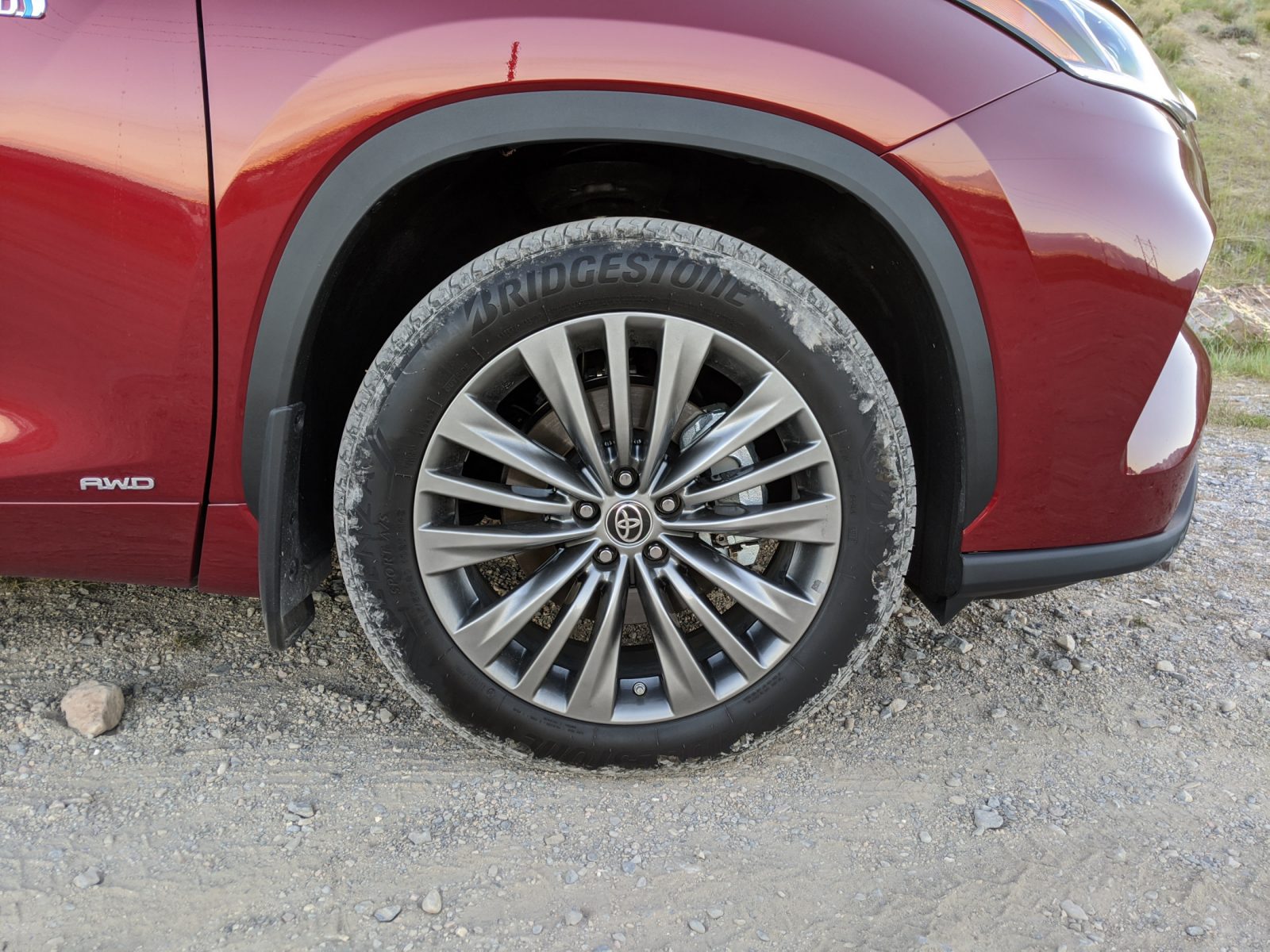
Interior
As expected in a top trim level vehicle, the Highlander Platinum is very nicely appointed inside. The leather is a little more on the durable side than soft side, which is just right for this vehicle. With a large 12.3” touch screen display, the infotainment system is very clear and easy to use. There are physical buttons and knobs for the climate and radio which is always nice. There are plenty of charge ports for the first two rows, but none in the third row.
All Highlander trims levels include Toyota Safety Sense 2.0 standard. This includes the pre-collision system with pedestrian detection, dynamic cruise control, lane departure alert with lane tracing assist, and many other safety features.
Seating is comfortable in all three rows. The second row has captain’s chairs that can also slide and recline. We found that fitting adults in all three rows can be a little tight as there just isn’t quite enough leg and head room in the third row.
Driving
Having driven the previous two generations of Highlanders, we found this one to be the best by far. Steering is direct and consistent, and the lower profile tires mean that there is little give in the sidewall, which helps keep the steering linear.
The power is fine around town, but when approaching freeway speeds, it lacks a little. Empty, there was nothing to worry about, but if it were fully loaded with a family and gear for a vacation, then certainly the top end will struggle a little. Ultimately, the lower power of the 2020 vs the 2019 is worth it in most situations due to the large increase in fuel economy.
There are 5 different drive modes: EV, Economy, Normal, Sport, and Trail. For the most part, the throttle sensitivity and gear ratio of the CVT are all that change, except for trail mode, which has a more aggressive traction control programming. EV mode is electric only, and we found its use to be very limited. It might be good for sneaking out in the middle of the night, but with a very limited range and slow speeds, it just isn’t a practical mode. In Economy mode, the throttle is the least sensitive and engine rpms are kept low by the CVT. In Normal mode, the throttle is slightly more aggressive than the economy mode, and the CVT keeps the rpms a little higher. Sport mode is the most aggressive as far as throttle response and power go. Trail mode dampens the throttle slightly, putting it between the Normal and Economy modes, but the traction control does a very good job of transferring power side to side.
There is something about having an energy use gauge constantly in view that engages a desire to drive as efficiently as possible. This is a good thing in such a large vehicle, as it’s easy to try and accelerate as fast or faster than the other vehicles around. In a small car, the extra energy use is minimal, but in a three-row crossover it can make a big difference.
Hybrid vehicles often have touchy, inconsistent brakes; not so with the Highlander. The transition between regeneration and the friction brakes is unnoticeable, and the smoothness of the brakes overall rival some of the best luxury vehicles on the market.
Off-Road
Most hybrids we have tested have struggled off-road; they simply aren’t designed for it. We were surprised to find that the Highlander hybrid was actually quite capable.
As expected, there is very little articulation in the articulation test, but it was able to climb the articulation test hill easily in the various drive modes. Moving onto the steep hill climb, the Highlander struggled to transfer power side to side in all the modes except trail mode. The hard line was too much, but the Highlander conquered the easy line on the steep climb with a little momentum.
Traveling on well-maintained dirt and gravel roads isn’t a problem. As things get rougher, the suspension quickly reaches its limits. From these tests, the Highlander should perform well as an all-weather vehicle, but maybe not an all-terrain vehicle.
Pricing
Toyota has kept the pricing of this hybrid model down. While not available in the base trim, adding the hybrid only increases the price by $1,400 over any of the other trim levels. It also comes very nicely equipped in the Platinum trim, and our test model only had a few extras, all of which were under $500. The base price for a Highlander Hybrid Platinum AWD is $50,200, plus $1,120 for the destination charge. With the $425 Ruby Flare Pearl paint, $318 carpet floor and cargo mats, $350 cargo cross bars, and $99 universal tablet holder, the total price for our test model was only $52,512. We know that $52k is a lot of money, but in the case of the Highlander Hybrid Platinum, it is a pretty good value for what you get.
Conclusion
Returning great fuel mileage, especially for a 7-passenger crossover, the Highland Hybrid is an excellent family vehicle. The updated design is well beyond what the Highlander has been in previous years. While we miss the V6 hybrid in the previous generation, the 2.5 liter inline 4 is a good trade-off, considering the significant jump in fuel mileage. Off-road, it performs well and we expect it to have great all-weather capabilities.
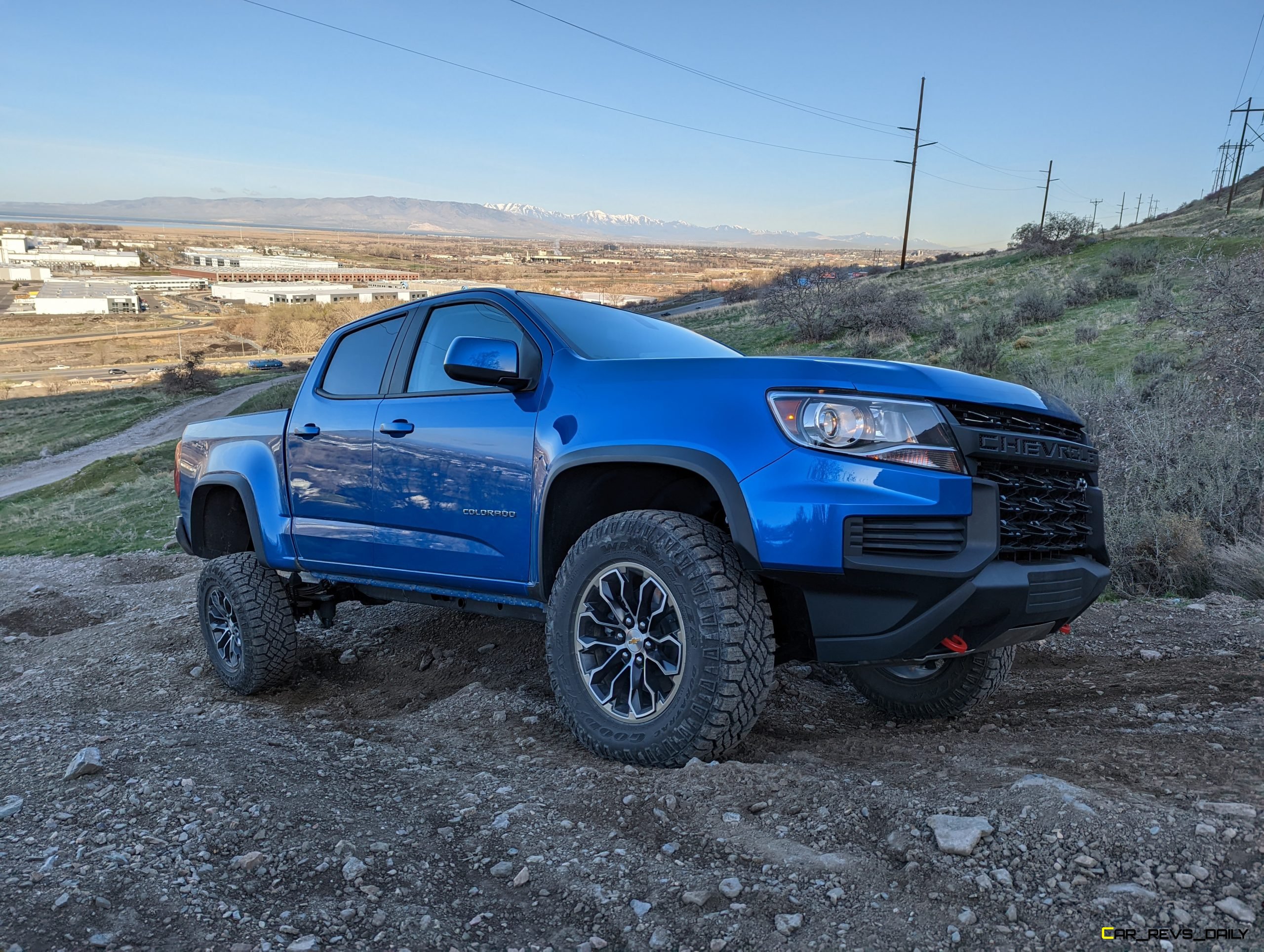
Matthew Barnes is an experienced towing expert. He works as a mechanical engineer and his day job involves testing a variety of vehicles while towing trailers of all types and sizes. Matt shares his knowledge by writing for automotive news outlets in the evenings. When he’s not working he can be found spending time in the great outdoors with his family. He enjoys camping, hiking, canyoneering, and backpacking. Whenever possible he spends time riding in or on any power sports vehicle he can find and claims he can drive anything with a motor, which probably isn’t true.
Matt lives in the Utah mountains and often posts cool off-roading videos to his Instagram and YouTube channel.

